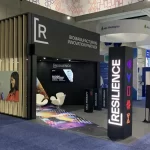Virtual reality (VR) technology is a relatively new medium for business communication and collaboration. With VR, you can participate in a virtual three-dimensional visual or other sensory digital simulation of a workspace. This way, you can analyze a new 3D prototype with your colleagues. However, there are challenges to mainstream enterprise acceptance of VR technology.
VR enables remote presence
VR (virtual reality) collaboration is an emerging technology that enables teams to collaborate from anywhere in the world. The combination of augmented and virtual reality creates an environment in which remote workers can interact with each other in an immersive, realistic way.
A recent study by the Logistics Management Institute’s Research Institute explored the impact of VR for distributed workforces. The study looked at how employees of an architectural firm could conduct site inspections without leaving their offices. Among other benefits, virtual collaboration may help a firm define work/personal boundaries and reduce travel costs.
Despite the promise of virtual collaboration, the technology is still limited in what it can offer. For example, participants cannot sense a presence during a Zoom conference. They also have to grapple with how to protect sensitive information presented in a virtual office environment.
One way to improve the quality of VR collaboration is to use it to simulate job responsibilities. Another is to enhance the interview experience.
VR meetings create a three-dimensional visual or other sensory digital simulation of a workspace
If you are looking for an innovative way to increase productivity, consider virtual reality meetings. This type of meeting simulates a workspace, and uses tools and technology to bring remote workers together. It also enhances spatial awareness.
These virtual meetings can be a cost-effective solution for business. They bring employees, partners, clients, and other business stakeholders together in a safe and collaborative environment. A VR-equipped room can be designed to suit your team’s needs. You can use a variety of technologies, including 360 video, whiteboards, and whiteboard games.
Some industries, such as medical and engineering, are already using VR. For example, Lockheed Martin engineers wear VR glasses to inspect planes for safety. They are able to work at a 30% faster rate because of the immersive environment.
Other industries, such as entertainment, are also seeing the benefits of this technology. Whether you are a retailer or a manufacturer, VR can provide a great experience for potential consumers.
VR collaboration software helps to analyze a new 3D prototype with your colleagues
VR collaboration software is a software tool that allows people to interact in a virtual reality environment. This allows individuals to communicate in real time and visually evaluate 3D models with their colleagues. It also enhances prototype testing and minimizes prototyping costs.
Today, a wide range of VR solutions have been developed. These include augmented reality, a combination of the two, and a variety of different virtual environments. Some of these solutions have already been introduced to the market. However, there is still much to be done in this area.
One of the major benefits of VR is that it allows companies to collaborate across geographic boundaries. The ability to work together in a virtual setting can save money and travel expenses. Another benefit is that it can reduce distractions.
With VR, teams can develop and test new product designs in a controlled, virtual environment. Virtual prototypes are easy to create and can be analyzed quickly. They are highly cost effective and can help detect errors early in the product lifecycle.
Challenges to mainstream enterprise acceptance of VR
Despite the growth of VR in the enterprise space, there are still many roadblocks. Some companies don’t have in-house skills or don’t feel confident in creating content.
One major hurdle is user acceptance. This is often the first step in overcoming the adoption barrier. However, there are many factors that influence acceptance.
Researchers have explored the social dimensions that influence the acceptance of VR in elderly people. Among these are perceived enjoyment and effort expectancy. The PEnjoy dimension has a strong effect on how the elderly perceive and interact with VR.
There is also a growing need to develop virtual communities for elderly people. These communities are used for tele-rehabilitation therapy and for entertainment.
Another area of interest is how VR can influence consumer behaviors. This may include virtual shopping. For example, a company could use VR to show an ad or to create a new product. In addition, businesses could train staff using VR.












More Stories
The Importance of Budgeting in Business Finance
The Future of Retail: Online Vs. Brick-and-Mortar
The Psychology of Consumer Behavior – Insights for Marketers